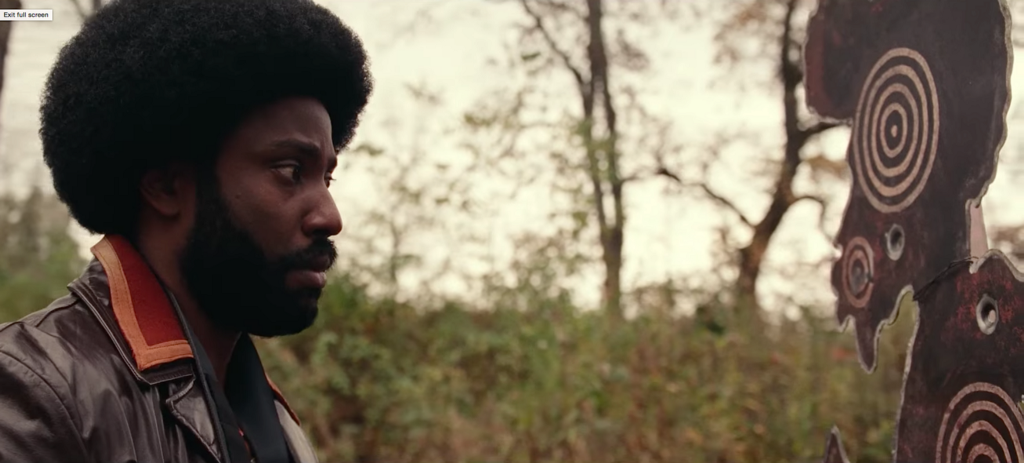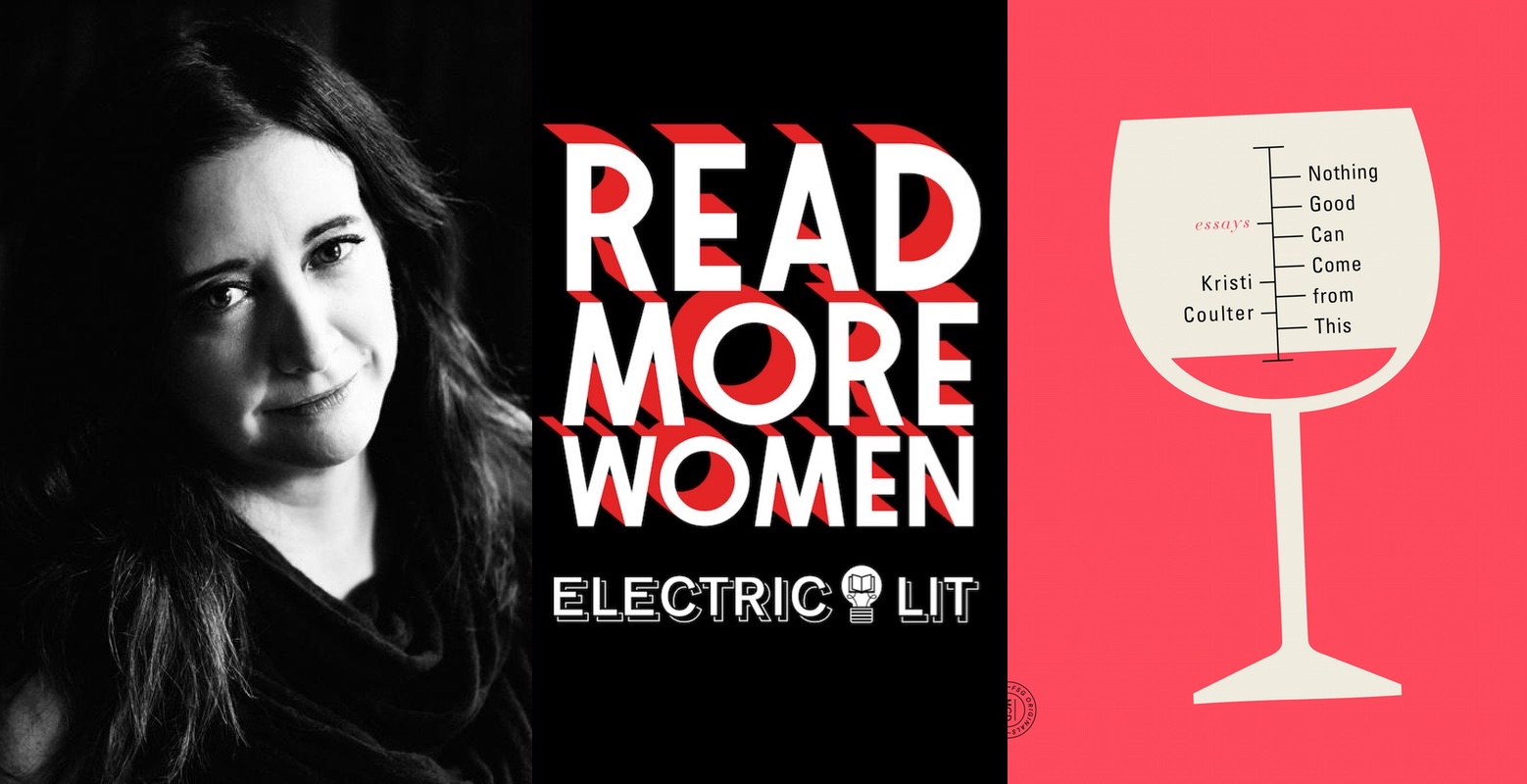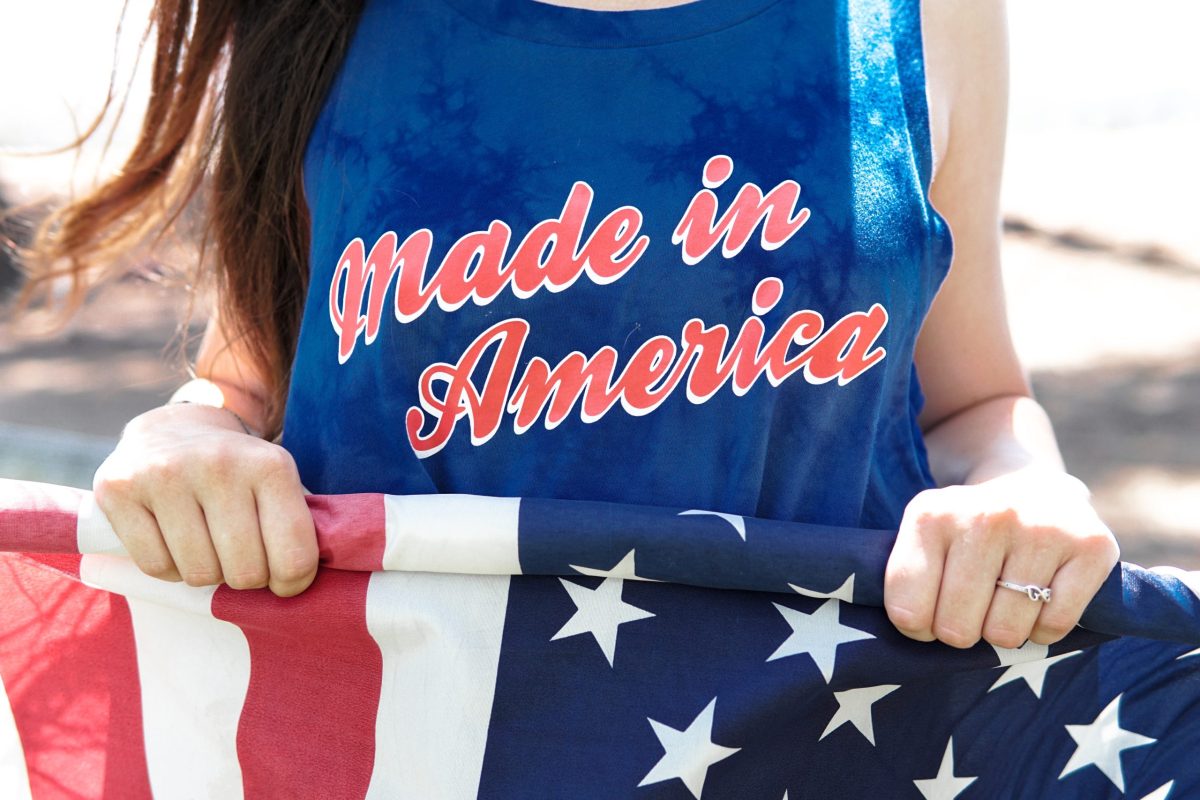Books & Culture
‘BlacKkKlansman’ Shows How White Supremacists Make Language Into a Weapon
‘BlacKkKlansman’ Shows How White Supremacists Make Language Into a WeaponSpike Lee’s new film is an outrageous true story, but it’s also a case study in how words can be misused

The opening scenes of Spike Lee’s new movie, BlacKkKlansman, are in black and white. The movie is a period piece based on the true story of a black man, Ron Stallworth (played in the film by John David Washington), who became the Colorado Springs Police Department’s first black officer in 1972 and then successfully infiltrated the city’s local Ku Klux Klan chapter in an elaborate sting operation. But this black and white imagery is an effect Lee is using to create the illusion of film from an even earlier era. A conspicuously squarely-dressed man named Dr. Kennebrew Beauregard (Alec Baldwin) appears in front of images of D.W.Griffith’s epically racist black and white film Birth of a Nation, practically foaming at the mouth with concern like the narrator in anti-marijuana propaganda film Reefer Madness — only this time the warnings are about Jewish and black Americans who he believes are turning America into a “mongrel” nation. “We had a great way of life,” Dr. Beauregard repeats at least three times, like a brainwasher trying to indoctrinate the viewer, while blending into the film in the backdrop. This opening sequence sets up something Lee intends to focus on throughout the telling of Stallworth’s remarkable story: the way language can and has been weaponized by white supremacists.
In his book Anti-Semite and Jew (1944) Jean-Paul Sartre describes how anti-Semites “act in bad faith” and “play with discourse” to disconcert their opponents. “They know that their remarks are frivolous, open to challenge,” Sartre explains, “But they are amusing themselves for it is their adversary who is obliged to use words responsibly, since he believes in words.” In BlacKkKlansman, David Duke (Topher Grace) is a slimy, overconfident salesman of the white nationalist brand. In his slickest salesperson voice Duke says that he agrees with people who say that “America is a racist country” — but unlike the black Colorado residents using the phrase to call out the racial profiling and police brutality they experience, Duke argues America is racist because it’s “anti-white.” This willful misuse of the word “racism” allows him to reframe oppressors as victims and vice versa.
The white nationalist group known as the Klan is no longer the Klan; it’s “the organization,” and David Duke doesn’t like to be called its “grand wizard,” but its “national director.”
A little over a week after Trump’s election in 2016, Oxford Dictionaries declared “post-truth,” an adjective defined as “relating to or denoting circumstances in which objective facts are less influential in shaping public opinion than appeals to emotion and personal belief,” the word of the year. The term speaks to, among other things, how white nationalists won over millions of Americans by activating white panic with misinformation about how minorities were outnumbering white Americans, just as in Dr. Beauregard’s frenzied, fact-free opening tirade. When white nationalist behavior began to spike in recent years, journalists were at a loss for terminology to use to describe the former fringe group members who had suddenly made it all the way to the White House. In her piece titled “It is time to stop using the term ‘alt right,’” journalist Shaya Tayefe Mohajer notes how respected news outlets like the Associated Press used the phrase—which is attributed to white nationalist Richard Spencer — as a vague catch-all for white nationalist and white supremacist groups. “Somehow,” she writes, “they were allowed to rework their public personas with a term that makes them sound a little edgy, like an alt-weekly or alt-rock.” In Lee’s film, members of the so-called “invisible empire” of white supremacists undergo the same radical image reconstruction using linguistic obfuscation that allows them to exist and operate in plain sight. In BlacKkKlansman, the white nationalist group known as the Klan is no longer the Klan; it’s “the organization,” and David Duke doesn’t like to be called its “grand wizard,” but its “national director.”
Unchallenged manipulation of language has allowed white supremacists like Duke to legitimize themselves on a national scale. Duke sees this strategic play at respectability — suits not hoods — as his ticket to the White House, the end game of the white nationalist agenda. Lee clearly establishes how analogous his linguistic and sartorial deception is to today’s political reality where America is dealing with a president who ran on a KKK-endorsed “America first” campaign and is known for rhetorical games that involve making up words, being antagonistic to members of the press corps, willfully ignoring facts, and lying outright to the American public — according to The Washington Post he racked up “4,229 false or misleading claims in 558 days.” In an interview with the African-American Film Critics Association the real Ron Stallworth explains, “I didn’t plan on making a big political statement about racial relations, Trump’s America or anything like that. Spike did a masterful job of connecting those dots.” In real life, the combined effect of the hate group’s rebranding efforts and the media’s resistance and/or inability to properly name them, was that they succeeded in making words irrelevant and hate palatable. And Spike Lee insists we shouldn’t let them.
Stallworth arrives at his Klan investigation pretty organically. He sees a Klan membership recruitment ad in a newspaper sitting on his desk and calls the number listed. Once on the phone, Stallworth has to convince the Klan member he’s speaking to, who happens to be the chapter leader, that he is worthy of membership (any in-person meetings are attended by Flip Zimmerman (Adam Driver), a white undercover cop). In the film, as in the book it’s based on, he does this by championing white purity. In the book Stallworth tells him his sister is dating a black man and “every time I think about him putting his filthy black hands on her pure white body I get disgusted and sick to my stomach.” He tells him he wants to join to “stop future abuse of the white race.” In the film version he says his sister is attacked by a black man, but the coded language is the same: he emphasizes her “purity.” In both cases, the story riles the chapter leader up because Stallworth’s racially coded buzzwords strike the exact right nerve. The synonymousness of whiteness and purity is a construction of racism. The link exists today in poorly thought out ad campaigns, as well as in the hearts and minds of many white Americans. According to BuzzFeed news last week South Carolina police arrested a 32-year-old woman, Lauren Cutshaw, for driving under the influence. In the police report Cutshaw defends herself by saying, “I’m a very clean, thoroughbred, white girl…I’m a white, clean girl.” When the police ask for clarification as to why her race matters in this situation Cutshaw explains, “You’re a cop, you should know what that means.”
During Stallworth’s initiation ceremony (attended by his white stand-in Flip), the Klan excitedly watches Birth of a Nation, whose imagery and ideology Lee deliberately loops throughout his movie. Among the snippets of the film Lee makes visible is a scene where a white woman is raped by a black man (though all black characters in the film are portrayed by white men in blackface). This imagery — deeply rooted in racist fears of miscegenation — is the source cause behind immeasurable violence in America. In 1955 Carolyn Bryant, a white woman, claimed black 14 year-old Emmett Till flirtatiously whistled at her and violently grabbed her. Her accusation incited two white men to brutally beat and murder Till. In a pivotal scene in BlacKkKlansman Connie, a Klan member’s wife, employs Bryant’s same tactic of giving false police testimony; she claims that Stallworth, a black man, violently attacked her, a white woman, as a means to cast doubt on his integrity — and it works. Upon hearing her accusation, two nearby cops pin Stallworth to the ground. Cutshaw, Donham, and Connie knowingly wield their white femininity and its attendant terms (purity, virtuousness) as a weapon, knowing full well that the mythic untouchable-ness of white women in America legitimizes any steps, however violent, taken to safeguard it. In The Atlantic writer Adam Serwer explains, “white nationalists win by activating white panic.” Lee shows how language rooted in racist fear can become a verbal panic button that, once uttered, activates white supremacist violence.
Lee shows how language rooted in racist fear can become a verbal panic button that, once uttered, activates white supremacist violence.
Last October a leaked report from the FBI’s Domestic Terrorism Analysis Unit revealed the FBI has a dossier on what it labeled “Black identity extremists,” activists it claims are likely to target law enforcement agencies. In an interview with Foreign Policy, who first obtained the report, a former counterterrorism official from the Department of Homeland Security called the label “a new umbrella designation that has no basis.” The following month at an oversight hearing in front of the House Judiciary Committee, Democratic Rep. Karen Bass questioned Attorney General Jeff Sessions about whether a comparable study was done on white identity extremists. Sessions said he was “not aware” of any FBI reports on such groups. Perhaps that’s true, but if so, it’s a matter of semantics; phrases like “identity extremist” (and, for that matter, “terrorist”) are rarely if ever used for white people engaging in domestic terrorism. A report from the U.S. Government Accountability Office found that of the 225 fatalities that resulted from terrorist activity between roughly September 2001 and December 2016, 106 were committed by far right violent extremists like Neo-Nazis and white supremacists. The eagerness to identify and punish “black identity extremists” despite a lack of evidence, and the refusal to even name “white identity extremists” despite there being a plethora of evidence of their activities, is telling. In addition to encoding racial connotation into words, white nationalists also win when they get away with misusing language, shifting the definitions of words to suit their needs.
Though BlacKkKlansman is overwhelmingly triumphant in tone — Stallworth does pull one over on Duke and Co. and lives to tell the tale — it ends on the image of a burning cross. It then cuts to real footage of the August 2017 “Unite the Right” rally in Charlottesville, Virginia: white men descending upon Emancipation Park carrying carrying tiki torches and loudly chanting the Nazi slogan “blood and soil,” cars ramming into groups of peaceful protestors eventually causing three fatalities. Among the dead was counter-protestor Heather Heyer, whose last Facebook post read: “If you’re not outraged, you’re not paying attention.” Then, seamlessly, Lee introduces footage of President Trump remarking on the event’s violence with his infamous comment about how there was “blame on both sides.” The montage’s message is clear: Hate is still alive. It has taken on different names and different language to appear innocuous — just this month two preteen boys strung a black doll from a noose near a burial ground for black Philadelphians and called it a “prank” — but it is still as prevalent now as it was in the historical period the film recreates. Lee’s decision to end on this sobering note speaks volumes about the film’s agenda. At its premiere at Cannes this year BlacKkKlansman received a six-minute standing ovation. It is frustrating for critics to call a film “necessary” as if its merits are not artistic but moral. But in this post-truth era, this film — a film that insists we shouldn’t allow language to be slippery, whose thesis, like so many of Lee’s other projects, is that we need to “Wake Up!” to hate and the way it manipulates words and ideas — feels necessary.








